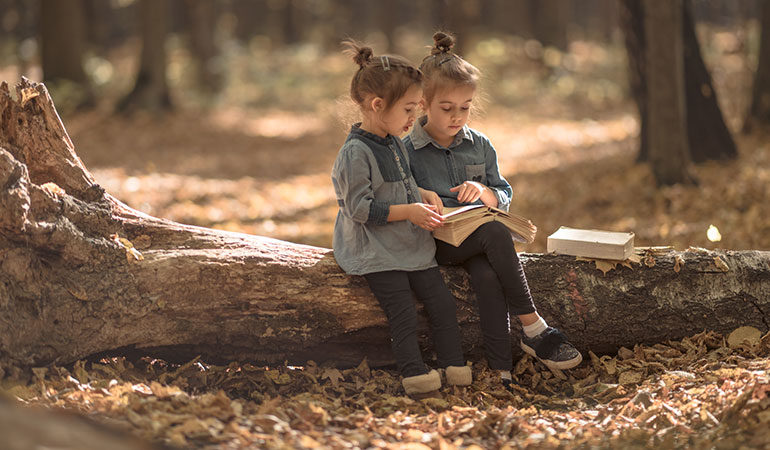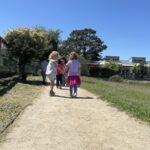Dear MMS Families,
Last week our fourteen-year-old son returned from a two-week backpacking trip through the mountain ranges of Wyoming with NOLS (National Outdoor Leadership School). We were ten minutes into our drive home from SFO. His clothes smelled of campfire smoke, and I was already noting that the black, caterpillar-like mustache on his upper lip had sprouted even bushier. (This would need to be addressed, “…I know you may think this makes you look older and more mature, but…”)
I vocalized the question I was most eager to ask, “So, honestly, where do you feel life is better? Back out there with your friends in the wilderness, or in front of your screens?” He gave me a sheepish, sideways glance and smiled, “Back there.”
Delight sparkled on my insides. All of it—the cost, the time, the travel, any physical struggles he had on the trip—was worth it. He arrived at and internalized a vital realization: Life less filtered and distracted is life more satisfying.
The timing was good too, as I had just returned myself from six days deep inside Carson National Forest in Northern New Mexico. In that sub-alpine ecosystem—steady ponderosa pines with bark the scent of butterscotch, wildflower-filled meadows, rushing rivers, afternoons of rolling thunder and gentle rain—I had gazed up at the same full moon and same constellations of stars as my son had from his spot on the mountains of Wyoming. We were synched.
This summer, in fact, a theme continues to emerge: the essentialness, and even urgency, of cultivating in our children an authentic, deep-rooted connection to the natural world. The theme started in June at a conference for California heads of school. There University of Hawaii’s Dr. Chip Fletcher presented a seminar on the science of climate change, the evidence for which is overwhelming and harkens, really, to a climate crisis for our planet. The point: we as schools need to ignite in our students the knowledge, sense of agency, and hope necessary to empower them to tackle a climate reality even more daunting and relevant for them and their future children than for us. Later, during our annual family camping trip with friends, we stood in silence at the base of a circle of redwood trees multiple-hundreds of years old, and caught the awe and perspective they offer: these majestic trees have been rooted right here for a time that stretches beyond the last great-great-great grandparents we all could remember or name; people who were born, lived full lives, and died. And the trees are still here, living on.
With his book, “Last Child in the Woods,” Richard Louv first coined the term, “Nature Deficit Disorder.” He uses it to describe the negative consequences for children connected to our current trend toward living almost solely indoors (most of us North Americans spend 90% of our lives indoors, in fact), and on screens, including an alarming increase in myopia/nearsightedness. And, he extrapolates on the salutary benefits for children of being outside and in nature, even scientifically researched and demonstrated help for reduction of ADD/ADHD symptoms. (National Geographic has this great article and TED-talk-like video on the topic of “our brains on nature,” as well.)
At MMS, we are committed to working in partnership with families to raise grounded, caring, capable children and adolescents, young people who think sharply and engage actively and joyfully with their lives. In this vein, I am inspired by three key benefits of a strong connection with nature, which we can work together to give our children.
Joy
In nature, all of our senses come alive; joy is inevitable. Witness an MMS toddler’s awe as she sees the guppies rush to gulp the flakes of fish food she’s just sprinkled into the aquarium; the laughter of the primary children running their hands through the worms in the garden with Ms. Brie; the bursting enthusiasm of the elementary children rushing into the foliage by the marsh to find examples of leaves to pick to show the idea of reticulate venation they just studied; the Junior High students eagerly and nervously donning bee suits for the first time to enter the farm’s apiary and open the hives to witness and consider firsthand the sociology of bees. This is joy.
The late poet W.S. Merwin captures well the delight we can find outside:
Black Cherries
Late in May as the light lengthens
toward summer the young goldfinches
flutter down through the day for the first time
to find themselves among fallen petals
cradling their day’s colors in the day’s shadows
of the garden beside the old house
after a cold spring with no rain
not a sound comes from the empty village
as I stand eating the black cherries
from the loaded branches above me
saying to myself Remember this
Concentration
Of the many well-documented benefits of time spent in nature, including increased capacity for reading social cues, less depression, and increased short-term memory, children’s ability to concentrate increases when they are connected to the natural world. The nervous system calms, and the jittery drive for stimulation subdues, and they are ready to go deep. We already know that Montessori students more frequently engage in states of thorough concentration, and being with nature only enhances this. It is why when our primary children feel wound up they can self-regulate and seek time in the garden or at movement; why I’ll often find elementary children at desks outside the classrooms working on math and writing and studies, while the clouds float above them and the Bay shimmers nearby too; why we often link the concrete academic work at the Junior High with experiential, hands-on endeavors on our farm; the farm is, in fact, its own whole “classroom.”
It is our false sense of being separate from nature (we are in fact made of natural materials and completely interdependent with the sun, water, trees, soil, and animals for our existence) that can make us feel cut off, anxious, and alone. Being with nature reminds us that, in fact, we are all linked. As the 8th century Chinese poet Li Po wrote,
The birds have vanished down the sky.
Now the last cloud drains away.
We sit together, the mountain and me,
until only the mountain remains.
Existential Peace
My good friend, a dean at USC, recently wrote this piece for the Los Angeles Times on the loneliness crisis in colleges and what his school specifically is doing about it. While it is hopeful that efforts are underway, it is also devastating to grasp the levels of anxiety, depression, and loneliness gripping our young people. When with nature (not just watching it from a window, but relating with it), our children connect to the timeliness of life, the inevitable cycles of birth and death, and the utter beauty, power, and magnitude of it all. Living in this world with an intimate relationship with nature creates love and care. And, we defend, protect, and advocate for that which and those whom we love. As the climate crisis cries out for attention, it is important now more than ever that our children have the time and opportunities to build a love for the natural world so they will passionately work to protect the planet and so they will always have nature as a source of solace and meaning. Few say it better than the late poet Mary Oliver:
Wild Geese
You do not have to be good.
You do not have to walk on your knees
for a hundred miles through the desert repenting.
You only have to let the soft animal of your body
love what it loves.
Tell me about despair, yours, and I will tell you mine.
Meanwhile the world goes on.
Meanwhile the sun and the clear pebbles of the rain
are moving across the landscapes,
over the prairies and the deep trees,
the mountains and the rivers.
Meanwhile the wild geese, high in the clean blue air,
are heading home again.
Whoever you are, no matter how lonely,
the world offers itself to your imagination,
calls to you like the wild geese, harsh and exciting –
over and over announcing your place
in the family of things.
May the waning days of summer keep you and yours sun-kissed and nature rich.
All my best,
Sam





